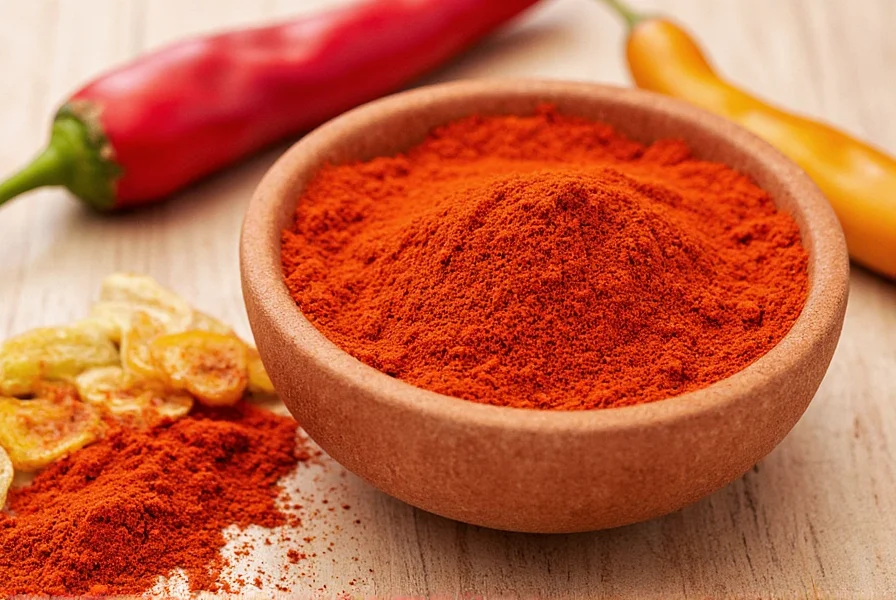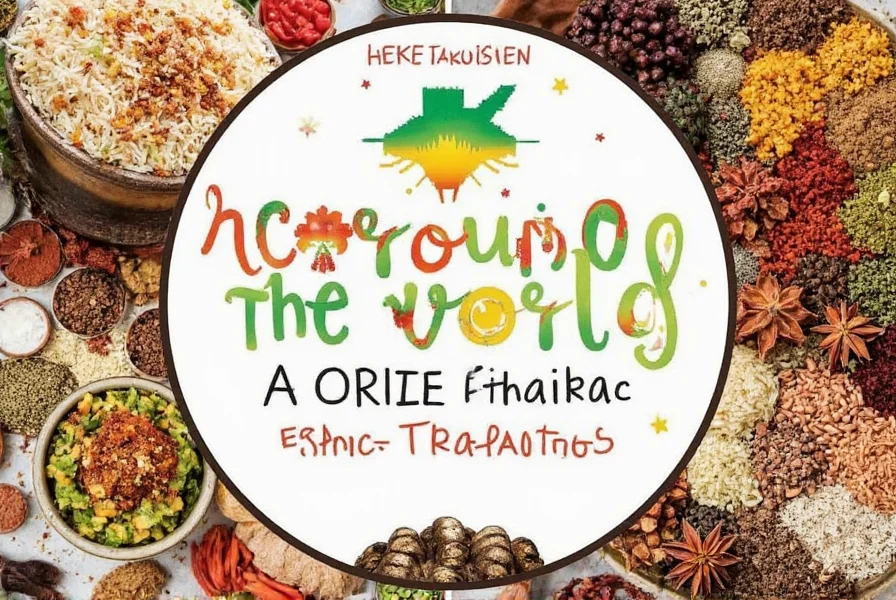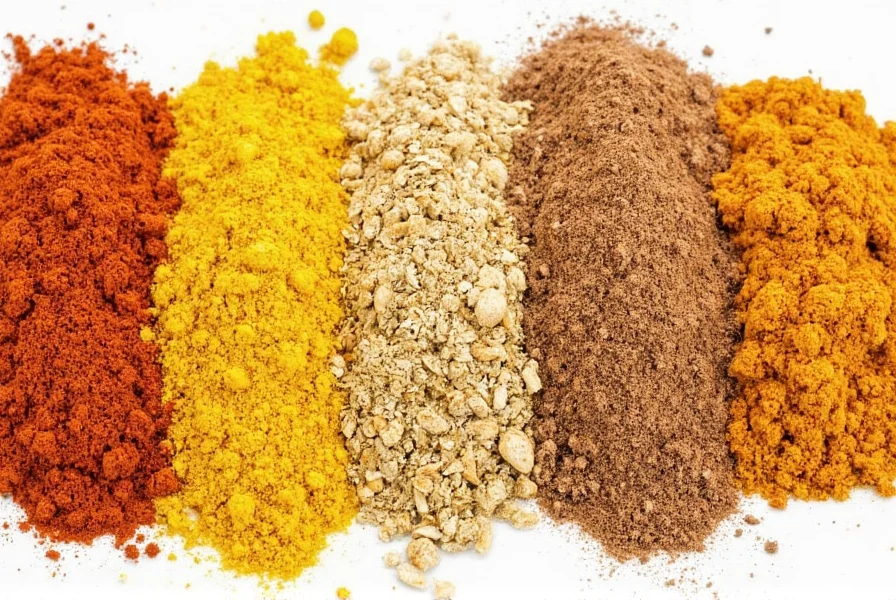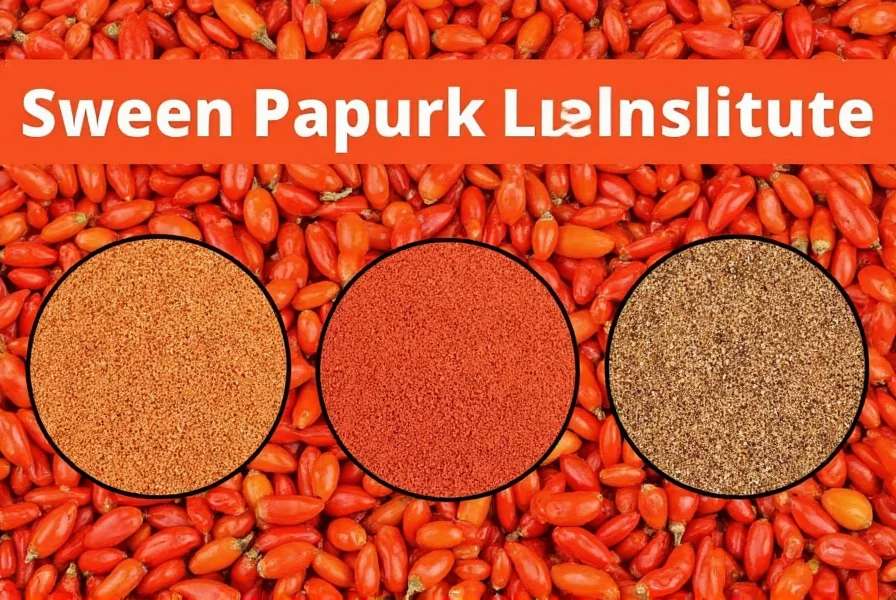Table of Contents
Introduction
When you need a sweet paprika substitute, the best options depend on your recipe's requirements. Here are the top 5 accurate alternatives that match sweet paprika's flavor profile and color, with precise usage guidelines.
Why You Might Need a Sweet Paprika Substitute
Common reasons for needing a sweet paprika substitute include:
- Running out of sweet paprika during cooking
- Seeking different flavor nuances while maintaining mild sweetness
- Adjusting heat levels in dishes
- Accommodating dietary preferences or availability constraints
Unlike common misconceptions, not all spice blends are suitable substitutes. We focus only on scientifically accurate alternatives that preserve dish integrity.
The Best Sweet Paprika Substitutes
Only these substitutes maintain sweet paprika's core characteristics:
1. Regular Paprika (Sweet Variety)
The closest match. Made from sweet red peppers with no added heat. Use 1:1 ratio for identical flavor and color.

2. Smoked Paprika (Sweet Variety)
Adds subtle smokiness while retaining sweetness. Best for grilled meats, stews, and Spanish dishes. Use 1:1 ratio but reduce other smoked ingredients.

3. Paprika + Sugar Blend
For regular paprika without sweetness: mix 2 parts paprika with 1 part granulated sugar. Ideal for rubs and dry applications. Do not use for liquid-based recipes.
4. Mild Chili Powder (with caveats)
Only use if recipe can handle cumin/garlic notes. Substitute 1:1 but reduce cumin in original recipe. Not recommended for delicate dishes.

How to Use These Substitutes in Your Cooking
- Regular Paprika: Direct replacement in all applications. Ideal for deviled eggs, potato salad, and meat rubs.
- Smoked Paprika: Use in dishes where smokiness complements flavors (e.g., barbecue sauces, roasted vegetables).
- Paprika + Sugar: Best for dry rubs. Avoid in sauces where sugar might caramelize unexpectedly.
- Mild Chili Powder: Only for Tex-Mex dishes. Always reduce cumin in original recipe by 50%.

| Substitute | Flavor Profile | Best For | Substitution Ratio | Key Considerations |
|---|---|---|---|---|
| Regular Paprika (Sweet) | Mild, sweet, no heat | Classic European dishes | 1:1 | Check label for "sweet" designation |
| Smoked Paprika (Sweet) | Smoky, sweet, rich | Grilled meats, stews | 1:1 | Reduce other smoked ingredients |
| Paprika + Sugar | Sweet, neutral | Dry rubs, spice blends | 2:1 paprika:sugar | Avoid in liquid-based recipes |
| Mild Chili Powder | Mild heat, cumin notes | Tex-Mex dishes | 1:1 but reduce cumin | Not suitable for delicate flavors |
Frequently Asked Questions
What's the difference between sweet paprika and regular paprika?
Sweet paprika is made exclusively from sweet red peppers with no capsaicin. Regular paprika may contain hot peppers unless labeled "sweet." Always check labels for "sweet" designation.
Can I substitute sweet paprika with smoked paprika?
Yes, but only sweet smoked paprika. Hot smoked paprika adds heat. Use 1:1 ratio and reduce other smoky ingredients in the recipe.
What can I use if I don't have any paprika at all?
For color: use 1/4 tsp turmeric per tsp paprika. For flavor: mix 1/2 tsp cumin + 1/2 tsp sweet paprika substitute (if available). Never use cayenne as primary substitute.
How much of the substitute should I use?
1:1 for regular/smoked paprika. For paprika+sugar: 2 parts paprika to 1 part sugar. For chili powder: 1:1 but reduce cumin in original recipe by 50%.
Does sweet paprika contain sugar?
No. The "sweet" refers to pepper variety, not added sugar. It has naturally sweet flavor without carbohydrates.
Can I make my own sweet paprika substitute?
Yes: mix 2 parts regular paprika with 1 part sugar for dry applications. For sauces, use 2 parts paprika + 1 part roasted red pepper puree. Never use annatto or garam masala as substitutes.
What's the best substitute for sweet paprika in chicken dishes?
Smoked paprika (sweet) for grilled chicken. Regular paprika for roasted chicken. Avoid chili powder as it alters flavor profile.
How long do paprika substitutes last?
Store in airtight containers away from light. Regular paprika: 1-2 years. Smoked paprika: 1 year. Sugar blends: 6 months (sugar may clump).
Conclusion
Accurate sweet paprika substitution requires understanding flavor chemistry. Only regular paprika (sweet), smoked paprika (sweet), and paprika+sugar blends preserve the essential characteristics. Avoid common misconceptions like using garam masala or annatto seeds - these fundamentally alter dish profiles. Always prioritize label verification and precise ratios for culinary success.










 浙公网安备
33010002000092号
浙公网安备
33010002000092号 浙B2-20120091-4
浙B2-20120091-4